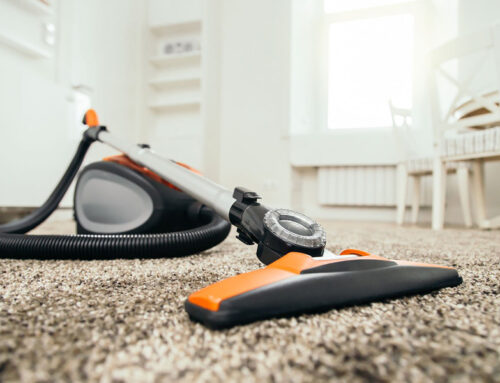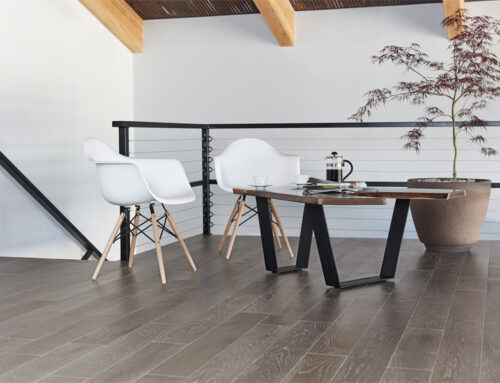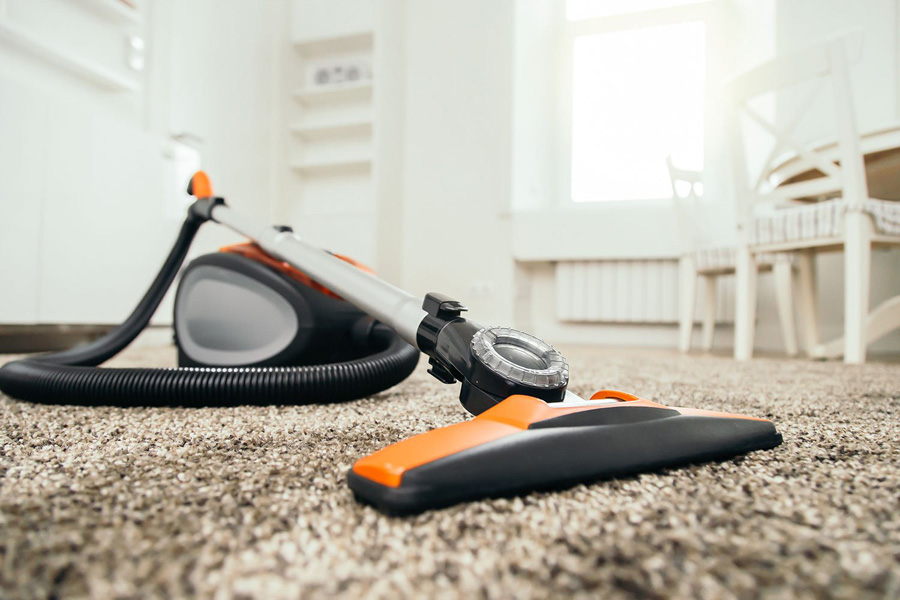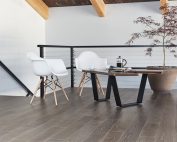Creating the perfect home gym starts from the ground up. Depending on your type of activity, from high-impact cross training to relaxing yoga, your floor can help make your workout a success. Make sure your space has a solid foundation and check out our recommendations for the best floors for your workout space.
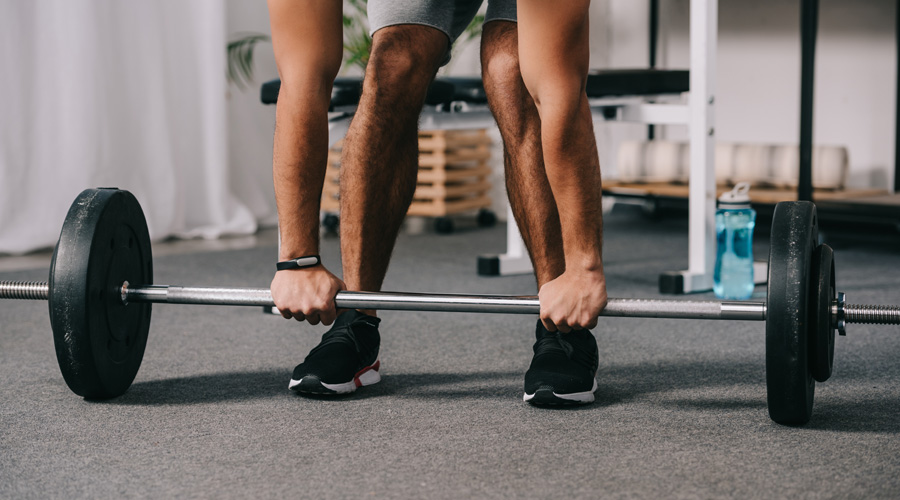
Best for Homes – Carpet
Surprisingly enough, carpet is one of the most popular choices for home gyms. A low pile, commercial style weave provides support for joints, offers good traction for speed or HIIT workouts and is easy to maintain. A great option is to opt for carpet squares, rather than wall-to-wall for simple replacements or updates. While cleaning can be an issues, good ventilation and the use of towels or mats can extend its lifespan exponentially.
Pros: Easy to install, comes in many colors and styles, easy on the joints and hands, easy to match to home décor
Cons: Can be difficult to clean, traps moisture and sweat, can shift and stretch over time, provides less shock absorption than foam or rubber
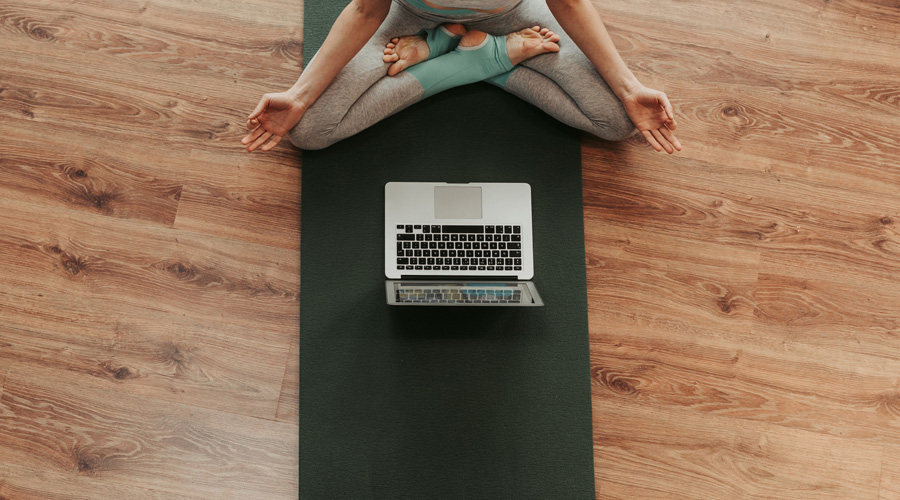
Best for Cleaning – Vinyl
When it comes to ease of cleaning, vinyl is the clear winner. It is moisture resistant, easy to sanitize and can stand up to the constant wear and tear of a home gym. Over the years, vinyl has come a long way and is now available in attractive wood look patterns and modern styles and colors. While it does have longevity on its side, vinyl is susceptible to punctures and tears so be careful with sharp edges or cleated footwear.
Pros: Easy to clean and sanitary, resistant to water and mold, many modern styles and patterns, simple to replace and upgrade, inexpensive
Cons: Cheaper styles can emit VOCs, low shock absorbency,
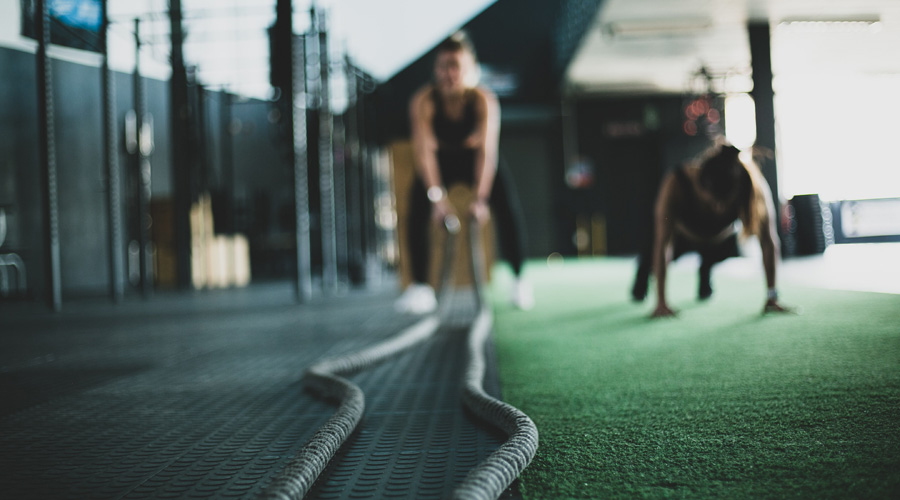
Best for Athletes – Synthetic Turf
Bring the outdoors inside by installing a section of artificial turf. Available in many different densities and patterns, turf is a great option for strength and agility training. It can also stand up to heavy workout equipment and repeated abuse. Look for a turf with shorter blades that provide resistance and texture as well as shock absorbent padding. It makes for an ideal surface to accommodate shearing forces of sudden turns, pivots and compression that come with many types of activity.
Pros: Great for all-weather workouts, easy to install, great for cross training, durable and long-lasting
Cons: Can be costly, will show wear after time, absorbs heat, can be tough on hands and exposed skin for floor exercises, difficult to clean
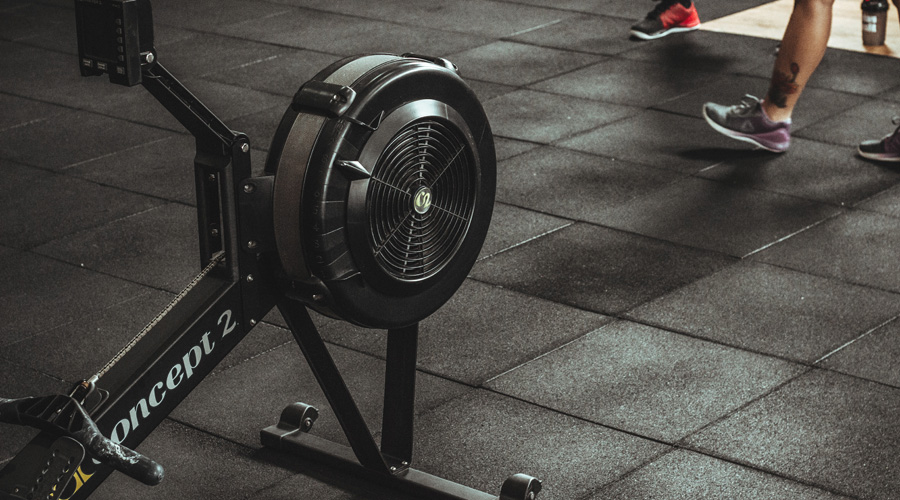
Best All Around – Rubber
Rubber flooring can be found in most commercial gyms and there are a few good reasons why. It’s affordable, strong, resistant to wear and tear, and provides cushion for weight training, exercise equipment and high-impact routines. It comes in many different thicknesses, making it customizable for your space and is easy to sanitize. It can be installed right over existing flooring in most cases and is simple to replace if needed.
Pros: Low maintenance, easy to clean, water resistant, dampens sound, easy on joints
Cons: Can be heavy to move, expensive depending on thickness, can break down if exposed to oils or sunlight, has a distinctive smell
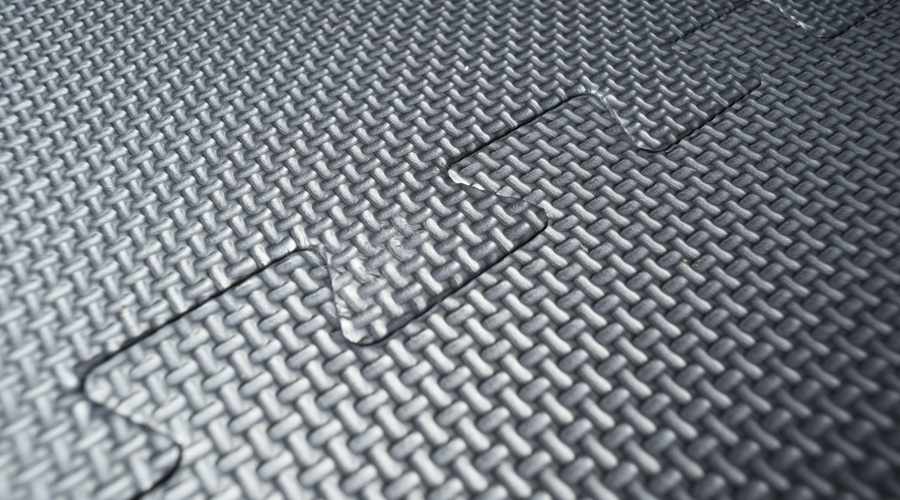
Best for Flex Spaces – Foam
Foam flooring offers some of the same benefits of rubber but at a lighter cost and weight. While it is not as durable as traditional rubber, it can be used successfully for low impact workouts, like yoga and pilates as well as high intensity HIIT routines. It does show dents over time, so heavy weights or exercise equipment is not recommended. Typically it is installed using interlocking tiles, which makes it easy to move, replace and clean.
Pros: Comes in many color and styles, easy to clean, soft on hands for floor exercises, provides cushion, easy to replace as needed.
Cons: Doesn’t last as long as rubber options, can chip or tear with repeated use, not suitable for use under heavy weights or workout equipment



